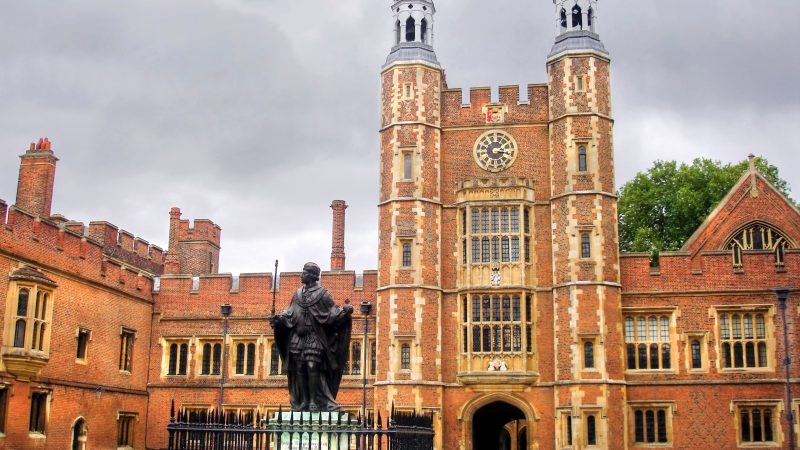
Private schools are reported to be gearing up for the biggest hike in fees in 20 years “amid the threat of a VAT raid by Labour”, according to the Telegraph earlier this month.
Rational public discussion about Labour’s VAT proposal has been repeatedly disrupted by misrepresentations propagated in the media in recent months. The Labour Party leadership has stated that, should it form the next government, it will levy VAT on private school fees and remove the charitable status of any private schools that are not special schools. Here are four key myths – and why they are just that:
Claim 1: Levying VAT will lead to a 20% rise in fees
Some of the VAT will be offset through recovery from suppliers. This extra cost is unlikely to be entirely added on to fees. Schools themselves will be able to make some savings, for example by small increases in their class sizes. If parents are obliged to meet two thirds of this additional cost, that means approximately only a 10% rise in fees on top of what they would usually pay. Even if parents pay the whole extra cost, fees rise by only 15%.
Claim 2: One in four pupils will be forced to leave private schools
To put the 10-15% rise in fees in perspective, fees have risen by an average of 7% every year between 2000 and 2010, and by 4% every year between 2010 and 2019. During this time there has been no great change in the proportion of pupils at private schools. The evidence for the claim that a quarter of children – as many as 135,000 pupils – would switch sectors is obscure. One claimed source is a report by consultants commissioned by the Independent Schools Council. The consultants examined parents’ detailed finances in just 21 schools and somehow deduced that a minimum of 91,800 pupils across the country would switch. The study does not report any established statistical methods for this deduction. Also, 21 schools is nowhere near enough to form an accurate view across the whole country.
Another attributed source for this claim is a survey of 16,000 parents by the ISC itself. The survey report doesn’t appear to be available and therefore cannot be subject to scrutiny. According to a study by the Institute for Fiscal Studies (IFS) in 2011, the response to a 10% rise in the fees would be a 2.6% reduction in pupil numbers. Applying that to all the private schools in Britain, this suggests a switch of about 13,000 pupils from private to state schools. These switches would not happen all at once but take place gradually. The number of pupils disrupted by having to switch schools during the primary or secondary stages of their education would be small.
Claim 3. The exodus will lead to a ‘scramble for places’ in overcrowded state schools
As explained above, there will not be a large exodus from private schools as a result of the proposed VAT on fees. In some boroughs with a high density of private schools, falling rolls means that there would be spare places for any displaced private school children in primary and secondary schools in the coming years. There could be a few communities where a private school is forced to close, and where local authorities and other private schools in the area find they need to react quickly.
A more specific claim has been that ‘disadvantaged’ students will no longer be able to get into some schools because those places will be taken by ex-private school students. Predicting school place allocations is extremely difficult, and it’s just as likely that ex-private school students won’t get into their favoured schools and would have to go to schools further away. The consequences could be more socially mixed state schools, which is a positive thing for our society.
Claim 4. The expense of providing state places will cost more than VAT raises
The estimate for the gross amount of money that the VAT on fees will bring in is £1.75 billion. Any estimate of the net amount of money to be raised should take into account the effect of having to fund extra places in the state sector. The claim that the policy would in the end cost the government money is based on the false Claim two, using the grossly exaggerated figure of 135,000 pupils switching to state schools. However, if the correct, independently-based estimate of the number of pupils displaced to the state sector is used, the reduction is relatively small, and there will be a net revenue gain of far in excess of £1 billion.
PEPF are holding a live event on Thursday 27th April at Acland Burghley Comprehensive School in Camden to discuss the question of the private schools’ tax break.
Professor Francis Green will speak along alongside education journalist and campaigner Fiona Millar, Conservative peer and owner/publisher of the Good Schools Guide Lord Lucas, and charity law expert Matilda Clough. For more info and tickets, click here.




More from LabourList
Nudification apps facilitate digital sexual assault – and they should be banned
Diane Abbott suspended from Labour after defending racism comments
Labour campaign groups join forces to call for reinstatement of MPs